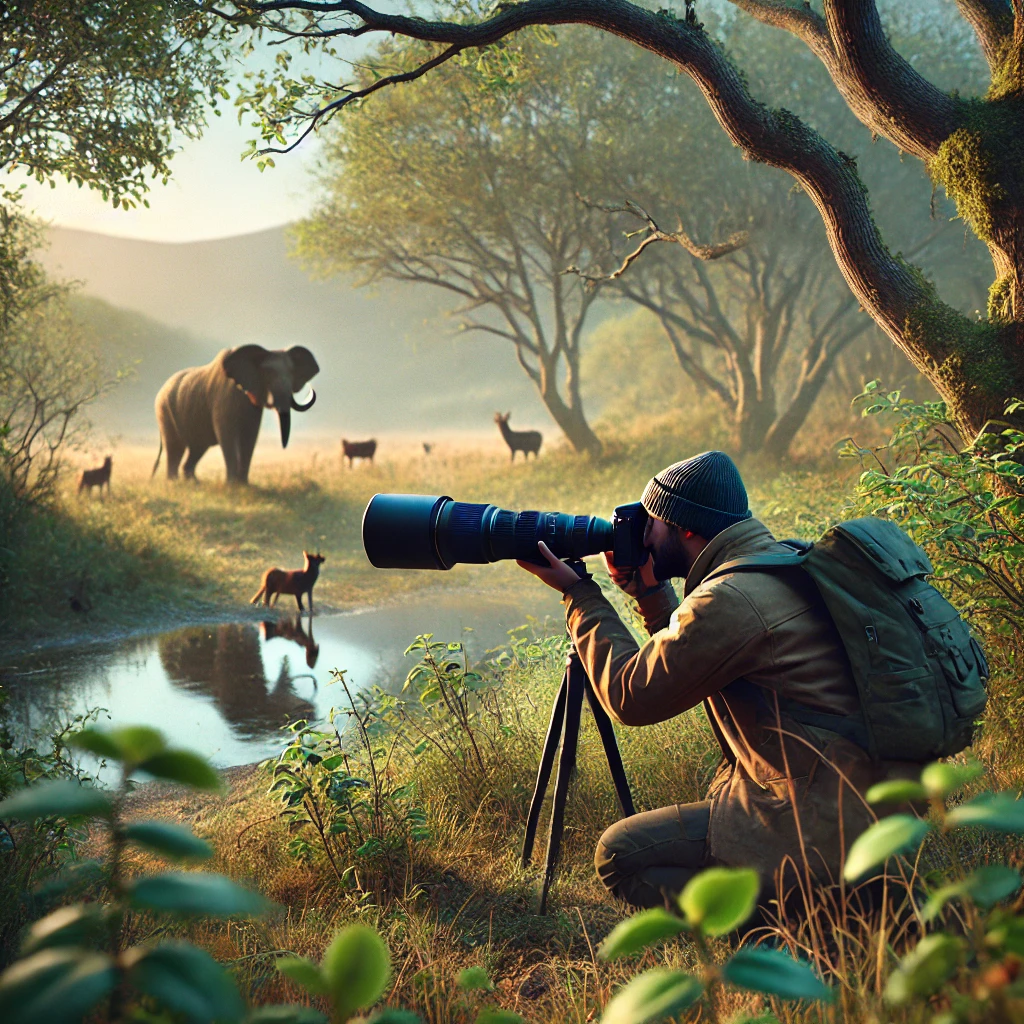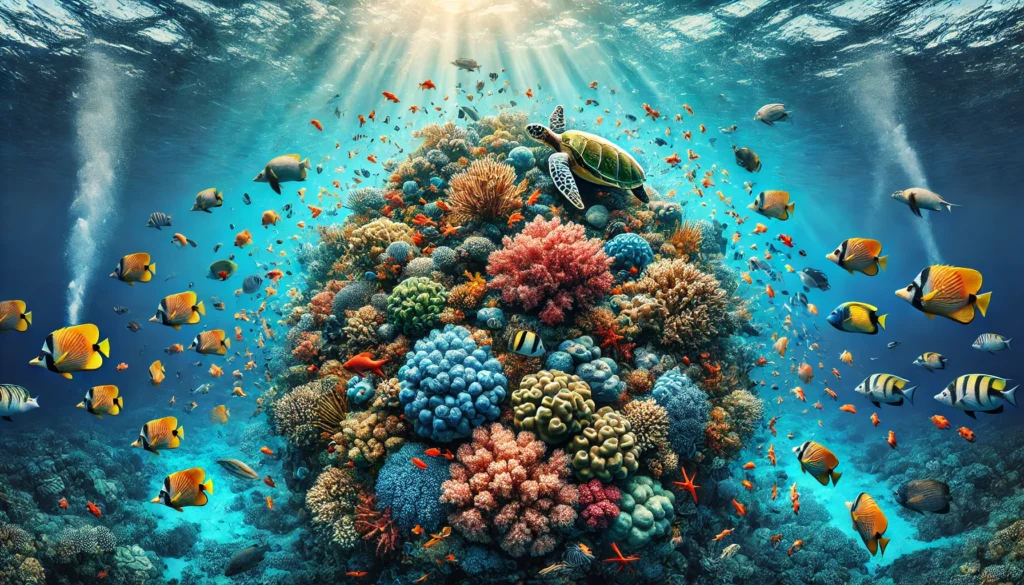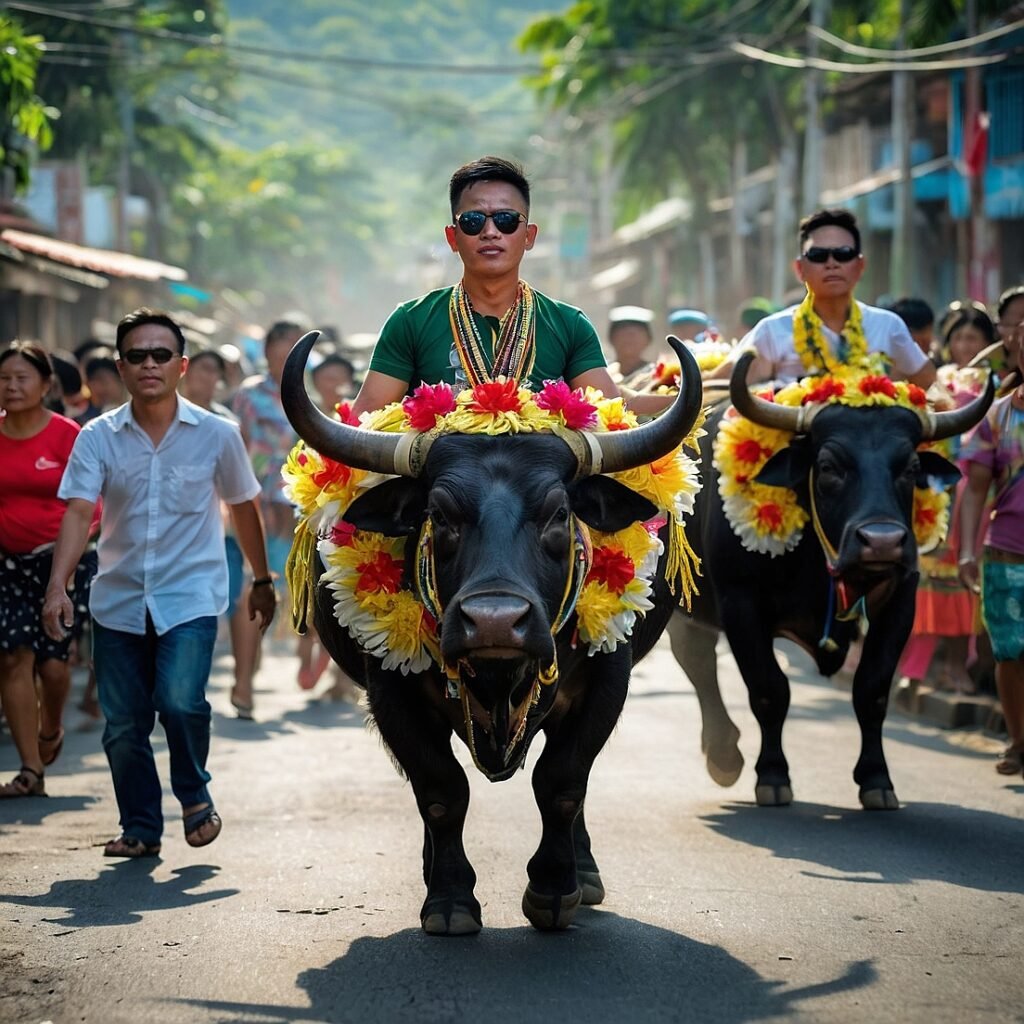Picture this: You’re crouched in the undergrowth, your camera poised, waiting for that perfect shot of a majestic lion in its natural habitat. Suddenly, you realize you’ve been sitting in a patch of poison ivy for the last three hours, and your legs have gone numb. Welcome to the glamorous world of wildlife photography! While it may seem like a dream job (minus the poison ivy), wildlife photography comes with its fair share of challenges – and we’re not just talking about battling the elements or lugging around equipment that weighs more than a small elephant.
In this digital age, where everyone with a smartphone fancies themselves the next National Geographic photographer, it’s more important than ever to discuss the ethics of wildlife photography. After all, we don’t want to end up as those tourists who thought it was a good idea to put a bison calf in their car at Yellowstone (spoiler alert: it wasn’t). So, grab your virtual safari hat, and let’s dive into the wild world of wildlife photography ethics!
The Impact of Wildlife Photography: More Than Just Pretty Pictures
The Good, the Bad, and the Ugly
Wildlife photography has the power to inspire, educate, and even change the world. It’s like having a superpower, but instead of flying or turning invisible, you’re wielding a camera. However, with great power comes great responsibility (thanks, Uncle Ben!). Let’s break down the impact of wildlife photography into three categories: the good, the bad, and the ugly.
The good: Wildlife photography can raise awareness about conservation issues, showcase the beauty of nature, and inspire people to protect our planet’s biodiversity. It’s like being Mother Nature’s personal PR agent, but with better equipment. These images can touch hearts, open minds, and even influence policy decisions. Remember how those heartbreaking photos of sea turtles tangled in plastic stirred up the anti-straw movement? That’s the power of wildlife photography in action.
The bad: Unfortunately, not all wildlife photography practices are created equal. Some photographers, in their quest for the perfect shot, may disturb animals, damage habitats, or even put themselves and others in danger. It’s like trying to get a selfie with a bear – sure, it might look cool on Instagram, but is it really worth becoming a bear’s lunch?
The ugly: At its worst, unethical wildlife photography can have severe consequences for animals and ecosystems. This can include altering animal behavior, separating mothers from their young, or even contributing to the decline of endangered species. It’s the photographic equivalent of being that person who touches all the fruit at the grocery store – nobody likes that guy, and the fruit certainly doesn’t appreciate it either.
The Ethics Dilemma: To Shoot or Not to Shoot?
Navigating the Moral Maze of Wildlife Photography
As a wildlife photographer, you’ll often find yourself in situations that make you question your ethics faster than a cheetah chasing its prey. Should you use bait to attract that elusive snow leopard? Is it okay to move a branch for a clearer shot of a bird’s nest? These are the kinds of existential crises that keep wildlife photographers up at night (well, that and the fear of bears raiding their campsites).
The truth is, there’s no one-size-fits-all answer to these ethical dilemmas. It’s more of a moral maze that would make even Aristotle scratch his head. However, there are some general principles that can guide us through this ethical jungle:
- The welfare of the animal always comes first. Always. Even if it means missing out on that award-winning shot.
- Knowledge is power. Learn about the species you’re photographing and their behavior. It’s like studying for a test, but instead of grades, you’re trying not to stress out a grizzly bear.
- Respect the environment. Leave no trace, except for your footprints (and maybe some hastily eaten granola bar wrappers – we’re only human, after all).
- Be honest about your methods. If you used a captive animal or digital manipulation, fess up. Honesty is the best policy, especially when your audience includes eagle-eyed photo editors who can spot a fake faster than you can say “Photoshop.”
The Do’s and Don’ts of Ethical Wildlife Photography
Do’s: Being the Wildlife Photographer Mother Nature Would Be Proud Of
- Do your research: Before you set out on your photographic adventure, study the animals you hope to capture on camera. Learn about their habits, habitat, and what stresses them out. It’s like preparing for a first date, but with less awkward small talk and more potential for being eaten.
- Keep your distance: Use long lenses and keep a respectful distance from your subjects. Think of it as social distancing, but for animals. They appreciate it just as much as we do during flu season.
- Be patient: Good things come to those who wait, and great wildlife photos come to those who wait even longer. Patience is not just a virtue; it’s a necessity in wildlife photography. So, settle in, get comfortable, and maybe bring a good book (or three).
- Use local guides: They know the area, the animals, and the best spots for photography. Plus, they can usually tell when an animal is about to charge, which is always handy information to have.
- Support conservation efforts: Use your photography to raise awareness about conservation issues. It’s like being a superhero, but instead of a cape, you’re wearing a camera strap.
Don’ts: Avoiding the Wildlife Photographer Hall of Shame
- Don’t bait or lure animals: This isn’t fishing, and animals aren’t props. Baiting can alter natural behaviors and create dangerous situations for both animals and humans. Just ask anyone who’s tried to take a selfie with a bear.
- Don’t disturb nests or dens: These are animal homes, not Airbnbs. Disturbing them can cause parents to abandon their young, which is a tragedy for the animals and terrible for your karma.
- Don’t use drones irresponsibly: Drones can stress animals and disrupt their natural behavior. Plus, nobody likes the sound of a drone buzzing overhead, least of all a napping leopard.
- Don’t chase or harass animals: This should go without saying, but apparently, it needs to be said. Chasing animals is stressful for them and potentially dangerous for you. Leave the chasing to the cheetahs.
- Don’t prioritize the photo over the animal’s welfare: No photo is worth harming an animal. Remember, you’re a wildlife photographer, not a wildlife director. You’re there to document, not orchestrate.
The Impact of Social Media on Wildlife Photography
When Likes and Shares Meet Paws and Claws
In the age of Instagram and TikTok, wildlife photography has taken on a whole new dimension. Suddenly, it’s not just about capturing beautiful images of animals in their natural habitats; it’s about getting those sweet, sweet likes and shares. But what happens when the pursuit of viral content collides with the ethics of wildlife photography? Let’s just say it’s not always a pretty picture.
Social media has undoubtedly brought wildlife photography to a broader audience. It’s democratized the field, allowing amateur photographers to share their work alongside seasoned professionals. This increased exposure can be a powerful tool for conservation, raising awareness about endangered species and threatened habitats. It’s like having a global megaphone for Mother Nature.
However, the dark side of social media’s influence on wildlife photography is as real as a rhino’s horn (and potentially just as dangerous). The pressure to get that perfect, shareable shot can lead photographers to take risks and make poor ethical decisions. We’ve all seen those photos of people posing dangerously close to wild animals or in fragile ecosystems. It’s like watching a train wreck in slow motion – you know it’s going to end badly, but you can’t look away.
Moreover, the instant gratification culture of social media can clash with the patience required for ethical wildlife photography. Waiting hours for the perfect natural shot doesn’t always mesh well with the need for constant content updates. It’s a bit like trying to live-tweet a sloth’s daily routine – fascinating, but not exactly action-packed.
To illustrate the impact of social media on wildlife photography, let’s look at some data:
| Year | Instagram Posts with #wildlifephotography | Reported Incidents of Wildlife Disturbance |
|---|---|---|
| 2015 | 1.2 million | 150 |
| 2016 | 2.5 million | 210 |
| 2017 | 4.8 million | 280 |
| 2018 | 7.2 million | 350 |
| 2019 | 10.5 million | 420 |
| 2020 | 15.3 million | 500 |
As we can see, the rise in wildlife photography posts on Instagram correlates with an increase in reported incidents of wildlife disturbance. It’s like watching a nature documentary where the cameraman keeps tripping over his own feet – entertaining, but not great for the animals.
The Role of Photography in Conservation
Saving the World, One Click at a Time
Now, before we all throw our cameras into the nearest body of water and vow never to photograph wildlife again, let’s remember the positive impact that ethical wildlife photography can have on conservation efforts. It’s not all doom, gloom, and stressed-out squirrels.
Wildlife photography plays a crucial role in conservation by:
- Raising awareness: A picture is worth a thousand words, and sometimes those words are “Holy cow, we need to save these animals!” Powerful images can inspire people to care about species and habitats they might never see in person.
- Documenting biodiversity: Wildlife photographers are often the first to capture images of rare or newly discovered species. It’s like being a nature paparazzi, but with less celebrity drama and more scientific value.
- Monitoring populations: Long-term photographic records can help scientists track changes in animal populations and behaviors over time. It’s like a really slow, really important game of spot the difference.
- Educating the public: Wildlife photographs can be used in educational materials, helping people learn about different species and ecosystems. It’s like a textbook, but way more interesting and with 100% fewer pop quizzes.
- Fundraising for conservation: Stunning wildlife images can be powerful tools for raising money for conservation projects. It turns out people are more likely to open their wallets when faced with adorable pictures of endangered animals. Who knew?
To put this into perspective, let’s look at some data on the impact of wildlife photography on conservation efforts:
| Year | Conservation Projects Supported by Wildlife Photography | Funds Raised (in millions USD) |
|---|---|---|
| 2015 | 120 | 15 |
| 2016 | 150 | 22 |
| 2017 | 180 | 30 |
| 2018 | 210 | 40 |
| 2019 | 250 | 55 |
| 2020 | 300 | 75 |
As we can see, the number of conservation projects supported by wildlife photography and the funds raised have been steadily increasing. It’s like watching a nature-themed charity telethon, but with better production values and fewer C-list celebrities.
Ethical Guidelines for Wildlife Photographers
The Ten Commandments of Wildlife Photography (Minus the Stone Tablets)
Now that we’ve covered the impact of wildlife photography and its role in conservation, let’s get down to brass tacks. Here are some ethical guidelines that every wildlife photographer should follow, whether you’re a seasoned pro or just starting out with your smartphone camera:
- Prioritize animal welfare: This is the golden rule of wildlife photography. If you have to choose between getting the shot and ensuring the animal’s well-being, always choose the latter. It’s like being a wildlife superhero – your power is restraint.
- Know the law: Familiarize yourself with local and international wildlife protection laws. Ignorance is not bliss when it comes to legal issues, especially when you’re dealing with protected species.
- Respect habitats: Stay on designated trails and don’t damage vegetation or disturb natural environments. Think of it as being a good houseguest in Mother Nature’s home.
- Use appropriate equipment: Invest in good quality long lenses to maintain a safe distance from animals. It’s like social distancing, but for photography.
- Be patient and quiet: Minimize noise and movement to avoid disturbing animals. Channel your inner ninja – silent, patient, and hopefully not dressed in all black in the middle of the savanna.
- Don’t use artificial lures or calls: This can disrupt natural behaviors and potentially harm animals. Leave the animal calls to the professionals (i.e., other animals).
- Be honest about your methods: If you use captive animals or digital manipulation, disclose this information. Honesty is the best policy, especially when your audience includes eagle-eyed photo editors.
- Educate others: Share your knowledge about ethical wildlife photography practices. Be the Yoda of wildlife photography ethics (but maybe with better grammar).
- Support conservation: Use your work to raise awareness about conservation issues. Your photos can be a voice for the voiceless – just don’t expect the animals to give you a thank-you card.
- Continually educate yourself: Stay updated on best practices and new research about wildlife behavior and conservation. It’s like continuing education, but with more exciting field trips.
The Future of Ethical Wildlife Photography
Crystal Ball Gazing in the Animal Kingdom
As we look to the future of wildlife photography, it’s clear that ethics will play an increasingly important role. With advancements in technology and growing awareness of conservation issues, the landscape of wildlife photography is evolving faster than a chameleon changes colors.
One trend we’re likely to see is the increased use of camera traps and remote imaging technology. These tools allow photographers to capture images of elusive or sensitive species without direct human presence. It’s like having a robotic David Attenborough quietly documenting wildlife 24/7.
Another emerging trend is the use of artificial intelligence in wildlife photography. AI can help identify species, track animal movements, and even predict behavior patterns. It’s like having a super-smart research assistant who never complains about the long hours or mosquito bites.
We’re also likely to see a greater emphasis on storytelling in wildlife photography. Rather than just capturing pretty pictures, photographers will increasingly focus on telling complete stories about ecosystems, conservation efforts, and the impacts of climate change. It’s like turning each photo into a mini-documentary.
Lastly, we can expect to see more collaboration between photographers, scientists, and conservationists. By working together, these groups can create more impactful and scientifically valuable images. It’s like forming a superhero team, but instead of fighting supervillains, they’re battling extinction and habitat loss.
Capturing the Beauty, Preserving the Beast
As we wrap up our safari through the world of wildlife photography ethics, let’s take a moment to reflect. Wildlife photography has the power to inspire wonder, provoke thought, and drive action. But with great power comes great responsibility (yes, I’m quoting Spider-Man again – deal with it).
Ethical wildlife photography is about more than just following a set of rules. It’s about developing a deep respect for the natural world and the creatures that inhabit it. It’s about understanding that we are visitors in their home, and acting accordingly. And most importantly, it’s about using our skills and passion to make a positive difference in the world.
So, the next time you’re out in the field, camera in hand, ready to capture that perfect shot, remember: you’re not just taking a picture. You’re telling a story, advocating for conservation, and potentially inspiring the next generation of wildlife lovers. Just try not to step in any poison ivy while you’re at it.
Now go forth, photograph ethically, and may the focus be with you!
Disclaimer: This blog post is based on information available up to 2020. While we strive for accuracy, wildlife conservation practices and photography technologies may have evolved since then. Please consult current guidelines and research for the most up-to-date information. If you spot any inaccuracies, please report them so we can correct them promptly. Remember, in wildlife photography, the only thing we want to shoot is photos!




